We may earn revenue from the products available on this page and participate in affiliate programs. Learn More ›
The kitchen is home to numerous handy appliances, such as the refrigerator, dishwasher, oven, stove, microwave, toaster, toaster oven, coffee maker, espresso machine, and air fryer, to name a few. These innovative devices are a big part of our daily and nightly routines, from brewing a fresh cup of coffee to meal prepping for the week. When it comes to replacing or upgrading one of these appliances, it’s important to find a brand that you can rely on day in and day out to help make your time in the kitchen as easy and enjoyable as possible.
But before scouring the aisles of the nearest department store, consider the product’s features to ensure that the new appliance will make a suitable replacement. Smart dishwashers, for example, have Wi-Fi connectivity and may offer voice control via a virtual home assistant, like Amazon’s Alexa. Keep in mind that products with more advanced features also come with a higher price tag, so if affordability is an important factor, it may be best to stick to a basic yet efficient model.
We researched the top product features, average pricing, and product durability, and then considered over 25 popular brands to put together this list of the best kitchen appliance brands. While price factored into our selection, quality, versatility, and longevity of each brand’s products were generally more important. Similarly, we also considered reliable warranties, affordable repairs, brand reputation, and customer feedback.
Different brands are better at different things. For example, one brand may excel in the manufacturing and distribution of refrigerators, while another brand’s strong suit may be smaller countertop appliances, such as toasters or microwaves. Take the time to think about which features matter most to you, then review the list below to find the best kitchen appliance brands for your home.
1. Bosch
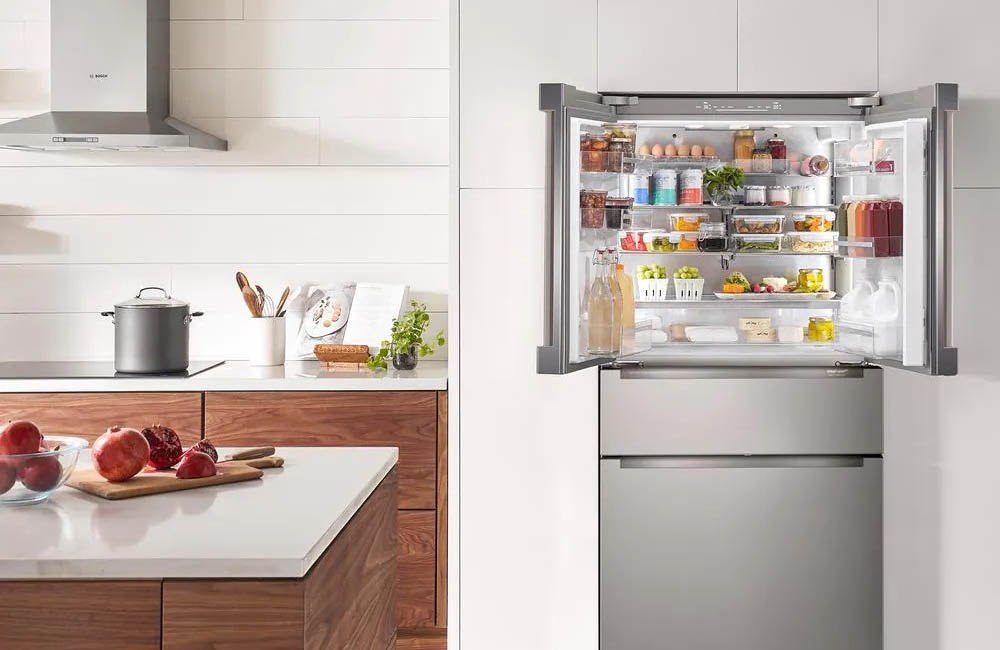
Price Range: $$$ to $$$$
Our Top Picks: Bosch 800 Series French 4 Door Refrigerator for $3,799 at The Home Depot; Bosch 800 Series Dishwasher for $1,399 at The Home Depot; or Bosch 500 Series Built-in Wall Oven for $2,549 at The Home Depot.
Bosch is a high-end manufacturer and distributor of home electronics and appliances. The company currently operates out of Germany, where it was founded in 1886. Bosch didn’t establish itself as a successful international brand until the founder, Robert Bosch, passed away in 1942. This was primarily due to tensions rising in Europe preceding and following WWI and WWII, but since that time, the company has expanded to become an international name that now operates facilities throughout the world, including a U.S.-based headquarters in Michigan.
Quality comes with a price tag, and because Bosch isn’t known for cutting corners, consumers may pay a higher price for Bosch’s kitchen appliances. The company is also known to invest in high-tech, innovative upgrades, like precision washing systems, automatic air-dry functions, climate-controlled drawers that extend freshness like those on the 800 Series refrigerator, and Wi-Fi–enabled appliances that can be set or adjusted with a mobile device. However, it’s Bosch’s sense of style that has made it a standout brand among competitors. Bosch products look great, regardless of their features.
Shop Bosch kitchen appliances at Lowe’s, The Home Depot, or Wayfair.
2. Danby
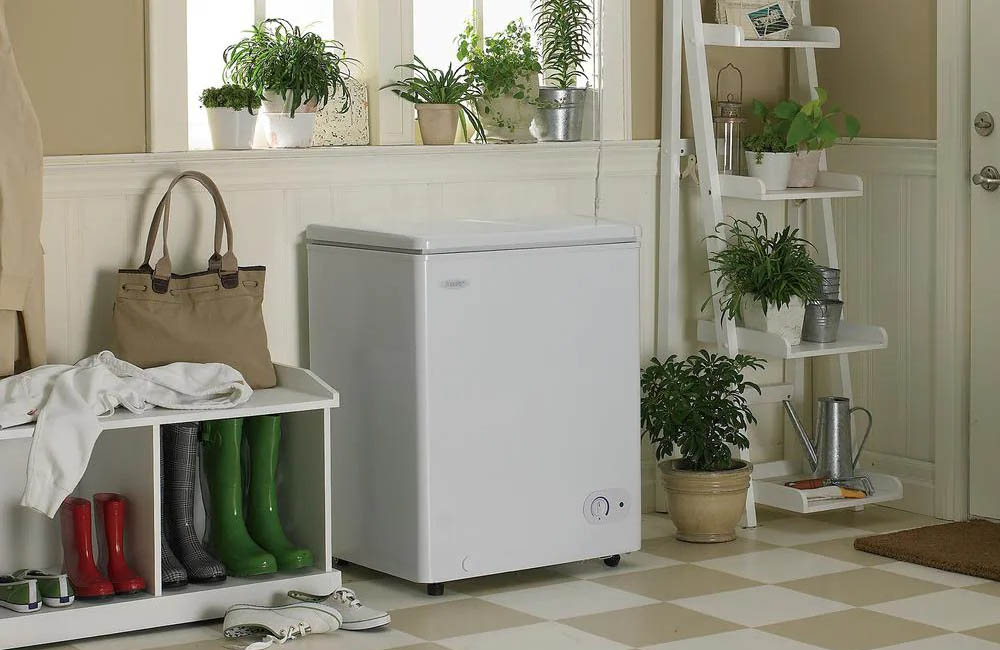
Price Range: $ to $$
Our Top Picks: Danby Mini Fridge in Metallic Red for $336.63 at The Home Depot, Danby 21.6” Countertop Dishwasher for $357.14 at The Home Depot, or Danby Designer Garage-Ready 4.3 cu. ft. Freezer for $484.99 at The Home Depot.
Danby was founded in 1947 as a small-appliance manufacturer that focused on making hot plates, slow cookers, and an early type of portable air conditioner. The Montreal-based start-up was successful enough to begin building the business and the reputation of the Danby brand. Soon, Danby products spread through Canada and the United States with headquarters in Guelph, Ontario, and locations in Arizona, Alabama, and Massachusetts.
Small appliances still remain a Danby specialty, including mini refrigerators (like the Danby Mini Fridge), apartment-size dishwashers, wine coolers, and chest freezers. While these appliances may not have the capacity to hold enough food for the average-size family or wash more than a half load of dishes at once, Danby appliances are often an ideal solution for single people and couples. Also, due to the small size of the appliances, Danby products are quite affordable.
Shop Danby kitchen appliances at The Home Depot, Walmart, or Wayfair.
3. Frigidaire
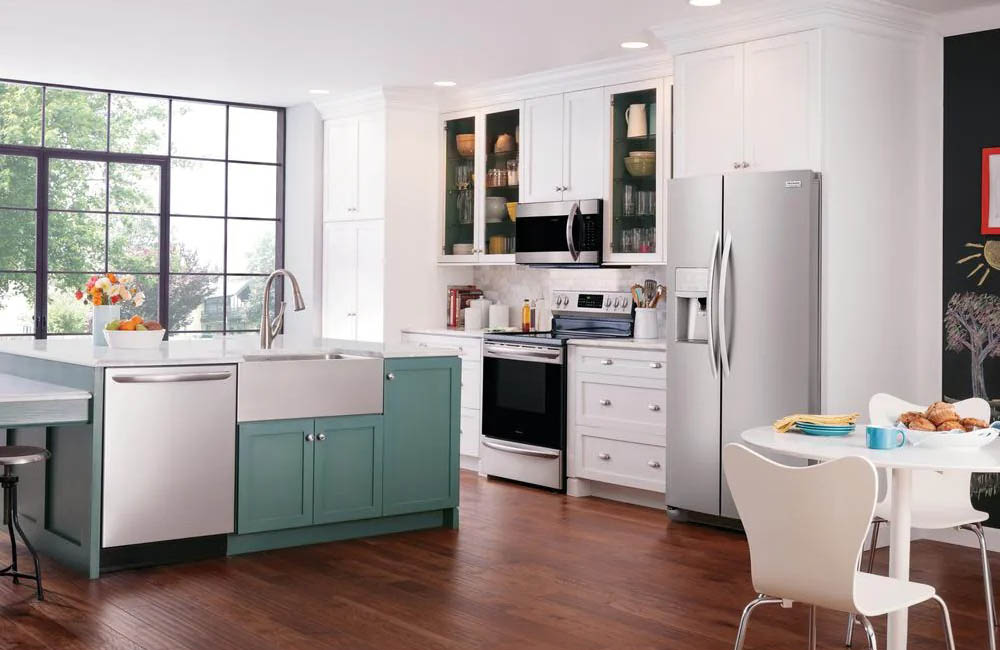
Price Range: $$ to $$$
Our Top Picks: Frigidaire 25.6 cu. ft. Side-By-Side Refrigerator for $1,148 at The Home Depot; Frigidaire Retro Mini Fridge in Blue for $129 at The Home Depot; or Frigidaire 18” Tall Tub Dishwasher for $809 at The Home Depot.
The Frigidaire brand began in 1916 as the Guardian Frigerator Company in Fort Wayne, Indiana. Guardian Frigerator Company changed its name to Frigidaire when the company was bought by General Motors. Its impressive history of high-quality refrigerator manufacturing, which includes creating the first self-contained refrigerator back in 1918, has led to well-deserved recognition as one of the most reliable appliance brands on the market. While the Frigidaire brand has now become a U.S. subsidiary of the Stockholm, Sweden-based appliance company Electrolux, this hasn’t impacted the quality of the products or the reliability of Frigidaire’s customer service.
The Frigidaire name is so firmly established that, as late as the mid-1900s, the brand was so synonymous with refrigerators that many Americans referred to any refrigerator as a Frigidaire. These days, the company produces a wide assortment of appliances from basic, budget-friendly options to high-end products equipped with cutting-edge features. This includes ranges, stovetops, ovens, refrigerators, dishwashers, microwaves, and more.
Shop Frigidaire kitchen appliances at Lowe’s, The Home Depot, or Best Buy.
4. GE
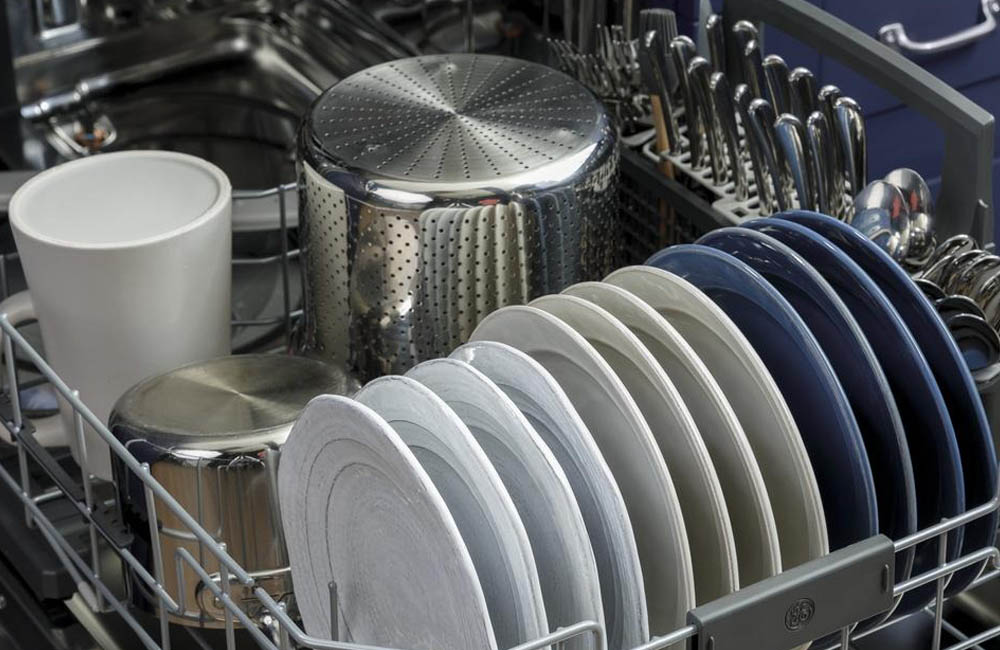
Price Range: $ to $$$
Our Top Picks: GE Dry Boost 24” Built-In Dishwasher for $519 at Lowe’s; GE 30” Air Fry Electric Range for $1,529 at Lowe’s; or GE 25.3 cu. ft. Side-By-Side Refrigerator for $1,098 at The Home Depot.
When Thomas Edison’s research was financed by Drexel Morgan & Co. in 1892, GE Appliances was born from the merger of the two companies—the original name was the Edison General Electric Company. The name was later shortened to General Electric and is now commonly referred to as GE or GE Appliances. The brand has been around for more than 100 years and remains one of the most popular kitchen appliance manufacturers in America.
To help ensure that its prices remain relatively low, GE focuses on the quality of the product in order to reduce breakdowns, malfunctioning equipment, and electrical problems that could shorten the life of the appliance. The goal of producing long-lasting, durable products is furthered by hard-wearing, easy-to-clean finishes with fingerprint-resistant exteriors on appliances like its stainless-steel dishwashers, for example. These keep the appliances looking great, even after years of use.
Shop GE kitchen appliances at Lowe’s, The Home Depot, or Best Buy.
5. Haier
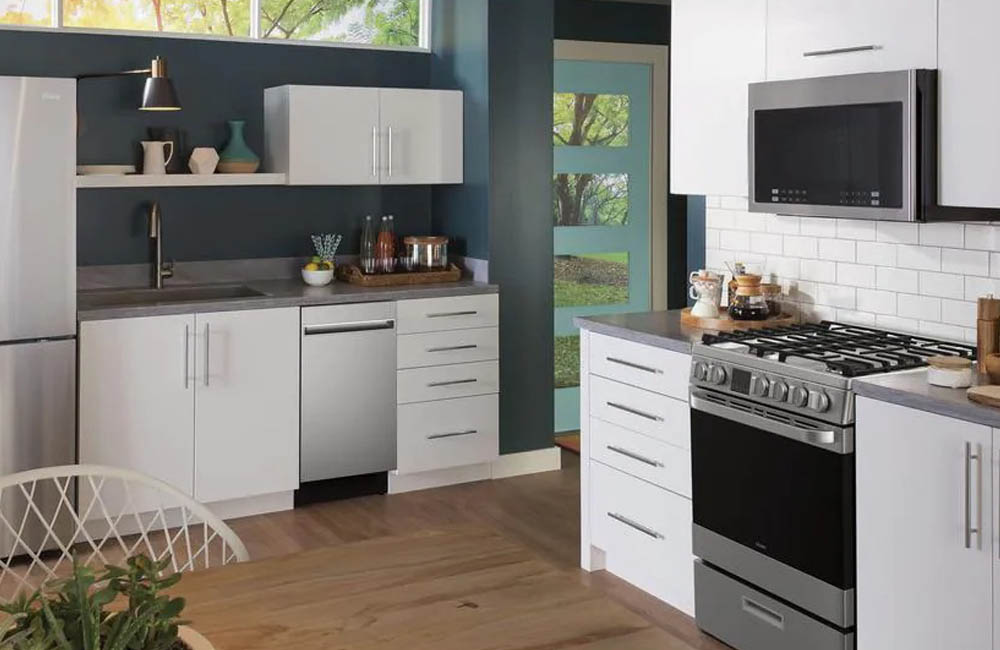
Price Range: $ to $$$
Our Top Picks: Haier Over-the-Range Microwave for $518 at The Home Depot, Haier 14.5 cu. ft. French Door Refrigerator for $1,098 at The Home Depot, or Haier 24” Gas Range With Convection Oven for $1,478 at The Home Depot.
Haier was founded in 1984 as the Qingdao Refrigerator Co., but it grew quickly out of its China-based origins in both popularity and size, eventually acquiring GE’s appliance division in 2016. Through GE, Haier also owns the Café brand of appliances. Despite these acquisitions, the Haier brand still manufactures its own line of appliances that tend to have a more basic appearance than high-tech brands like Samsung or LG.
Haier’s appliances are designed with simplicity and functionality in mind, and their clean exteriors and basic interiors reflect that. While they may lack many of the premium features offered by competitors, Haier’s appliances (such as the 14.5 cu. ft. French door refrigerator) offer a reliable design and affordable price to its consumers. However, parts for Haier appliances aren’t as easy to find as domestic brands, so repairs can be costly.
Shop Haier kitchen appliances at The Home Depot or Best Buy.
6. Amana
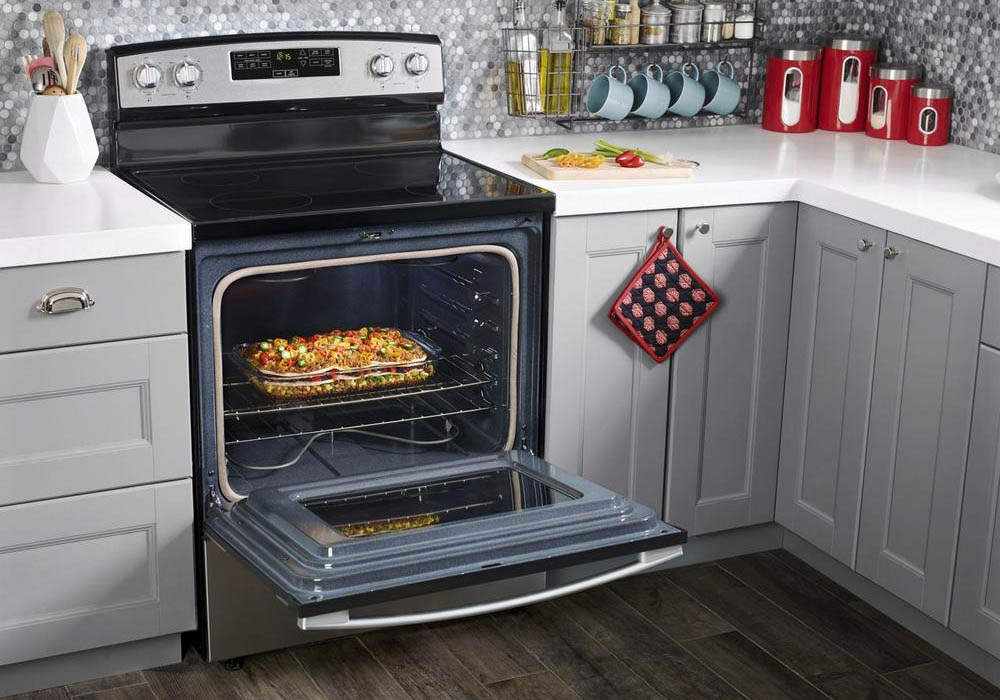
Price Range: $ to $$
Our Top Picks: Amana 4.8 cu. ft. Freestanding Electric Range for $599.99 at Best Buy; Amana 24.5 cu. ft. Side-by-Side Refrigerator. for $1,099.99 at Best Buy; or Amana 1.6 cu. ft. Over-the-Range Microwave for $218 at The Home Depot.
Founded in Iowa in 1934 as a commercial walk-in cooler company originally named The Electrical Equipment Co., Amana grew slowly as it gradually expanded the variety of products it offered, including the first upright freezer for the home. Since these modest beginnings, Amana has grown to be an internationally recognized appliance manufacturer. Now owned by the Whirlpool Corporation, Amana continues to create a wide range of inexpensive appliances, including furnaces, ovens, and dishwashers.
Amana’s appliances are built for budget-conscious individuals, so while the prices are relatively low, they don’t typically offer a lot of premium features like Wi-Fi connectivity or a high-end aesthetic appearance. However, Amana appliances are more than capable of washing the dishes, heating food, or keeping food cold, so shoppers can rely on Amana to create high-efficiency products at inexpensive prices, making them ideal for families on a budget. Additionally, items like their 1.6 cu. ft. Over-the-Range Microwave provide an affordable solution often not available from other brands.
Shop Amana kitchen appliances at Lowe’s, The Home Depot, or Best Buy.
7. KitchenAid
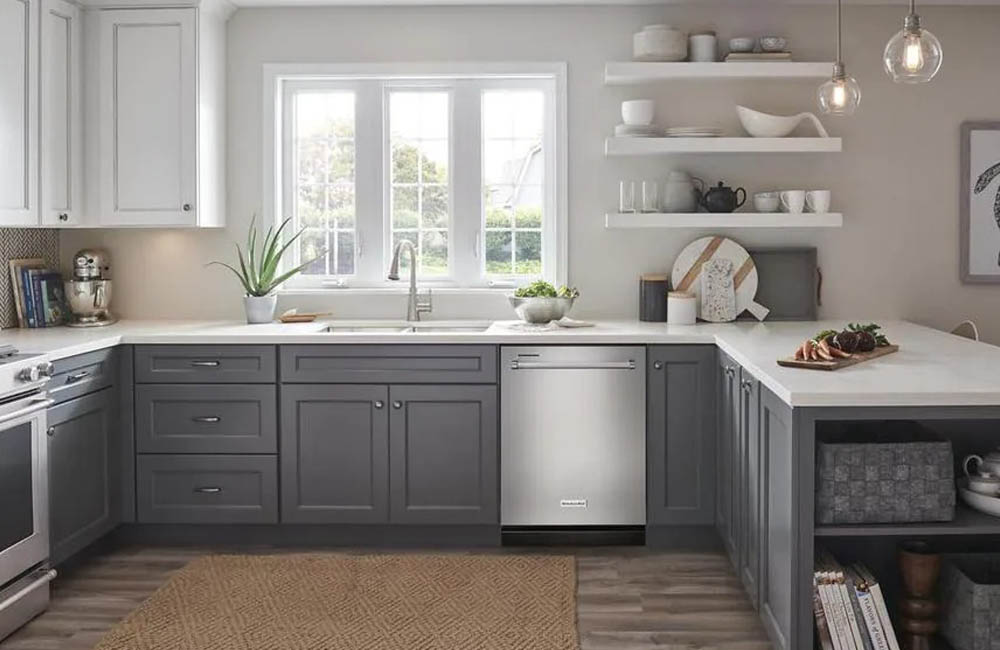
Price Range: $$ to $$$
Our Top Picks: KitchenAid Top Control Built-In Dishwasher for $1,298 at The Home Depot; KitchenAid 36″ Radiant Electric Cooktop for $2,248 at The Home Depot; or KitchenAid 25.8 cu. ft. French Door Refrigerator for $3,798 at The Home Depot.
This popular kitchen appliance brand was founded in 1919 by the Hobart Corporation, and it’s now owned by the Whirlpool Corporation. KitchenAid is based in the U.S., which allows the company to keep shipping and repair costs down for American consumers. KitchenAid’s affiliation with Whirlpool and its extensive range of products has made it possible for this brand to offer a wide assortment of sizes, styles, and features that are unavailable in some smaller brands.
KitchenAid’s most advanced products can get expensive, but the majority of KitchenAid appliances, like the built-in dishwasher we chose, are midrange options with modest prices and high durability and reliability. The brand is known to manufacture and distribute stovetops, ovens, ranges, refrigerators, microwaves, dishwashers, toasters, and more; however, KitchenAid may not be the best option for high-tech features.
Shop KitchenAid kitchen appliances at Lowe’s, The Home Depot, or Best Buy.
8. LG
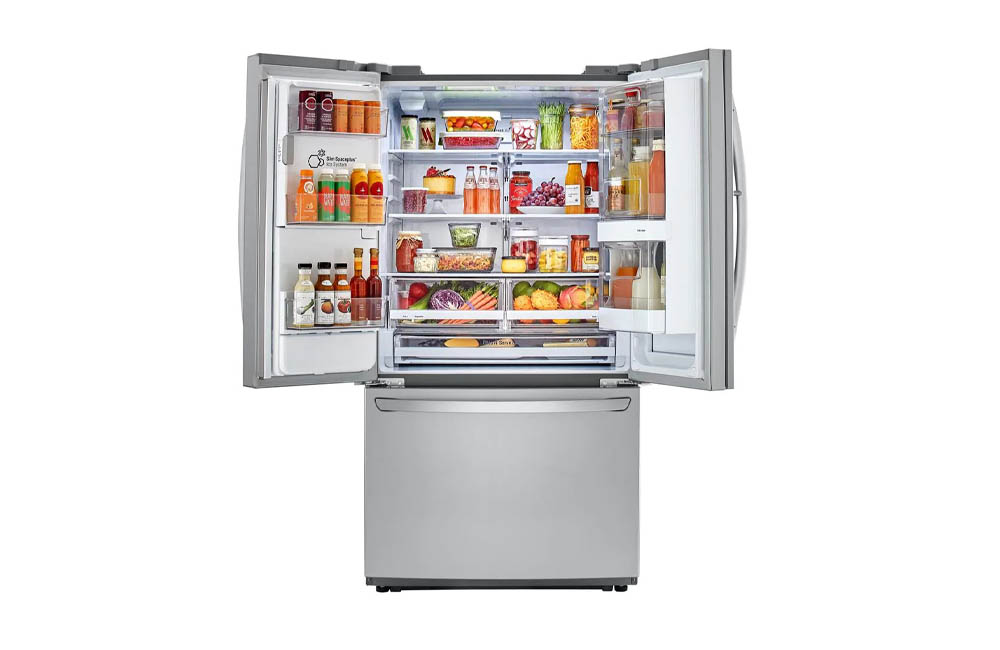
Price Range: $$$ to $$$$
Our Top Picks: LG 4-Door Smart Refrigerator for $1,699 at The Home Depot; LG 5.8 cu. ft. Single Oven Gas Range for $1,049 at The Home Depot; or LG 24” Top Control Dishwasher for $698 at The Home Depot.
LG stands for Lucky Goldstar, but it also refers to the company’s tagline: “Life’s Good.” This brand was founded in South Korea in 1958 and has since grown significantly in popularity, achieving international recognition in the electronics and appliance industries. LG is now a household name across America thanks to its high-quality televisions, computers, and innovative appliances. The brand’s domestic popularity, as well as a separate U.S. headquarters in New Jersey, makes it easier to find parts, so repair companies don’t need to charge as much to source parts for repairs.
While other appliance manufacturers prefer to stick to what they know, LG prioritizes innovation. Many LG products, such as its refrigerators, feature smart capabilities, including but not limited to Wi-Fi connectivity, smart-home integration, touch-screen surfaces, remote scheduling, and more. It’s these small, high-tech touches that make investing in LG worthwhile. However, all of these innovative features come at a higher price range—LG appliances are commonly more expensive than those of competitors.
Shop LG kitchen appliances at Lowe’s, The Home Depot, or Best Buy.
9. Maytag

Price Range: $$ to $$$
Our Top Picks: Maytag 6.4 cu. ft. Electric Range with Air Fry for $1,399.99 at Best Buy; Maytag Built-In Dishwasher With Dual Power Filtration for $878 at The Home Depot; or Maytag 24.7 cu. ft. French Door Refrigerator for $2,099.99 at Best Buy.
Maytag was founded in 1893 in the town of Newton, Iowa. The well-known brand started as a farm machinery manufacturer but began producing electric washing machines in 1911. It took just 13 years for the company to sell Maytag washers to one in every five American households and establish itself as one of the largest appliance manufacturers in the U.S. While the Whirlpool Corporation now owns it, Maytag’s focus on functionality and spaciousness remains to this day.
The company’s appliances, including refrigerators, ranges, microwaves, and dishwashers, are made to help big families manage groceries, dishes, and large meals without a problem. Maytag appliances focus on being bigger and better. This could mean a third rack, as found in the dishwasher we feature; humidity-controlled refrigerator doors; or an oversize oven, depending on your family’s needs. These appliances are incredibly durable. What’s more, Maytag is quick to send replacement parts thanks to its widespread domestic presence—Maytag has a variety of repair locations to fix any problems at an affordable price.
Shop Maytag kitchen appliances at Lowe’s, The Home Depot, or Best Buy.
10. Samsung
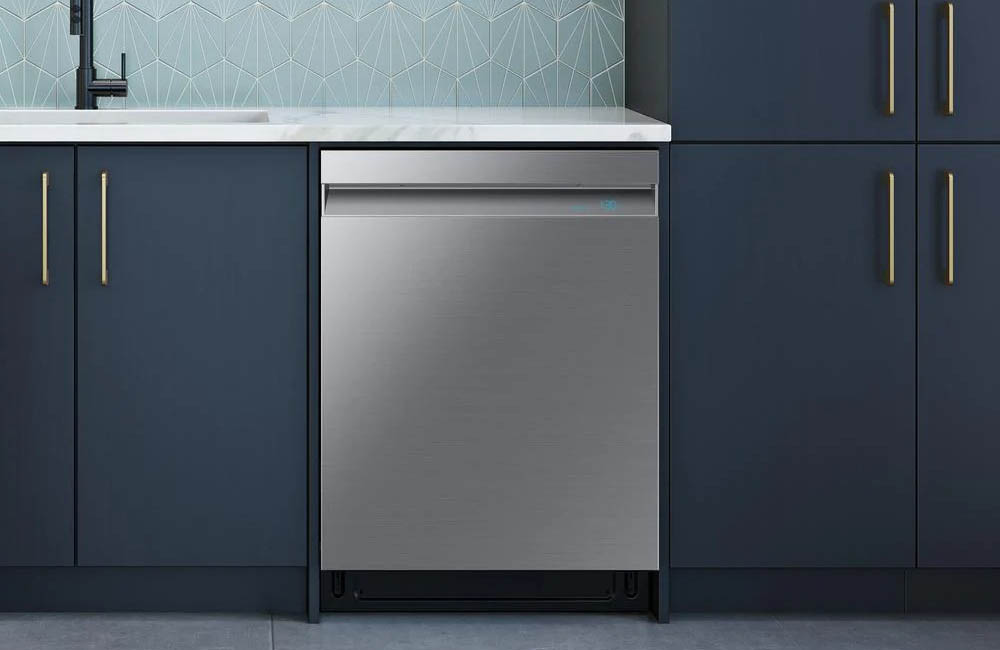
Price Range: $$$ to $$$$
Our Top Picks: Samsung 24” Top Control Dishwasher for $449 at Lowe’s; Samsung 6 cu. ft. Air Fry Gas Range for $829 at Lowe’s; or Samsung 27.4 cu. ft. Side-By-Side Refrigerator for $1,099 at Lowe’s.
Based in South Korea, Samsung is an internationally recognized brand best known as one of the largest smartphone manufacturers in the world. The company was founded over 80 years ago as a trading company, diversifying its interests and entering the electronics industry in the late 1960s. With the current focus on innovative technology and cutting-edge features, Samsung appliances are great additions that can bring a kitchen into the modern age or even give it a futuristic feel when multiple appliances are connected through Wi-Fi or Bluetooth.
Samsung kitchen appliances combine high-tech features with reliable operation, and items like the side-by-side refrigerator we like can be very affordable when compared with most rivals. However, it should be noted that the high-tech extras that come with these products also tend to increase their price tag.
Shop Samsung kitchen appliances at Lowe’s, The Home Depot, or Best Buy.
11. Whirlpool
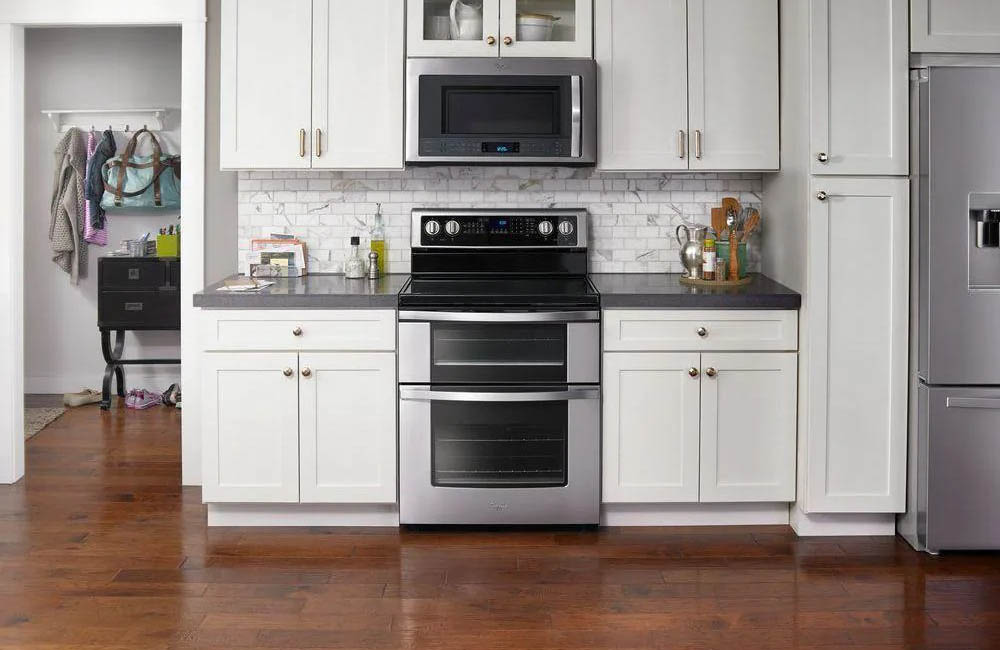
Price Range: $ to $$$
Our Top Picks: Whirlpool Double Oven Electric Range for $1,348 at The Home Depot; Whirlpool 24.5 cu. ft. French Door Refrigerator for $2,199 at Lowe’s; or Whirlpool 24” Stainless Steel Top Control Dishwasher for $498 at The Home Depot.
The Upton Machine Company was founded in 1911, long before it became the Whirlpool Corporation. The company acquired smaller companies, like the Seeger Refrigerator Company in 1955, in order to gradually grow its product offerings. Since then, Whirlpool has become well known for manufacturing a range of energy-efficient appliances, including ranges, refrigerators, dishwashers, stovetops, microwaves, and more.
Whirlpool has nine manufacturing facilities across the U.S. and owns a number of smaller appliance brands, including KitchenAid, Maytag, and Amana, so parts and repairs are relatively inexpensive when compared with international brands. Expect to find the Energy Star symbol on Whirlpool’s appliances like our featured refrigerator, due to the company’s focus on producing eco-friendly and sustainable products to meet modern consumer demand. However, it is important to check, as not all models are certified.
Shop Whirlpool kitchen appliances at Lowe’s, The Home Depot, or Best Buy.
12. Café
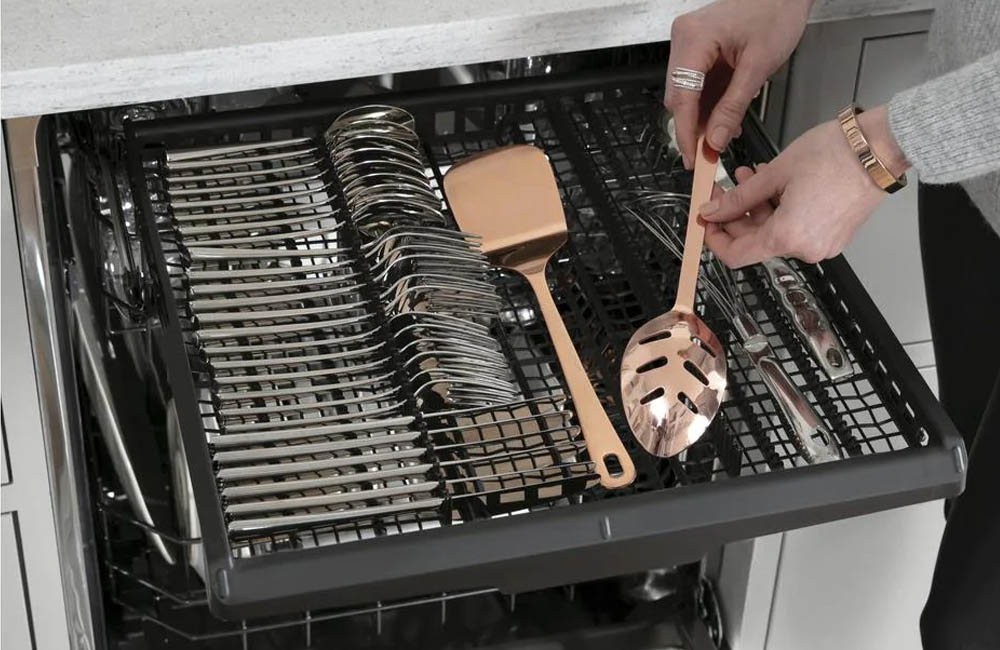
Price Range: $$$ to $$$$
Our Top Picks: Café Top Control Built-In Stainless Tub Dishwasher for $1,148 at The Home Depot; Café 30” 7.0 cu. ft. Dual-Fuel Range for $3,958 at The Home Depot; or Café Smart French Door Refrigerator for $3,599 at The Home Depot.
The Café name is easy to remember and the products are hard to forget, with unique designs that focus largely on the appearance of the products rather than offering complex, potentially unnecessary functions. Café was originally part of the GE brand until they decided to spin Café into its own high-end appliance brand in 2018. Though GE still owns Café, the products are in a completely different category than GE’s typical offerings, prioritizing aesthetic appeal over affordability.
Most Café appliances have impressive exteriors that look great in almost any kitchen, and the refrigerators, like our pick, make a particularly strong visual impact. These products also come with premium features, like Wi-Fi connectivity, smart-home integration, and touch screens. The products function with the same efficiency and durability as standard GE appliances, but the extra color options, drawer or shelf formats, and other standout features set Café appliances apart.
Shop Café kitchen appliances at Lowe’s, The Home Depot, or Wayfair.
13. Fisher & Paykel
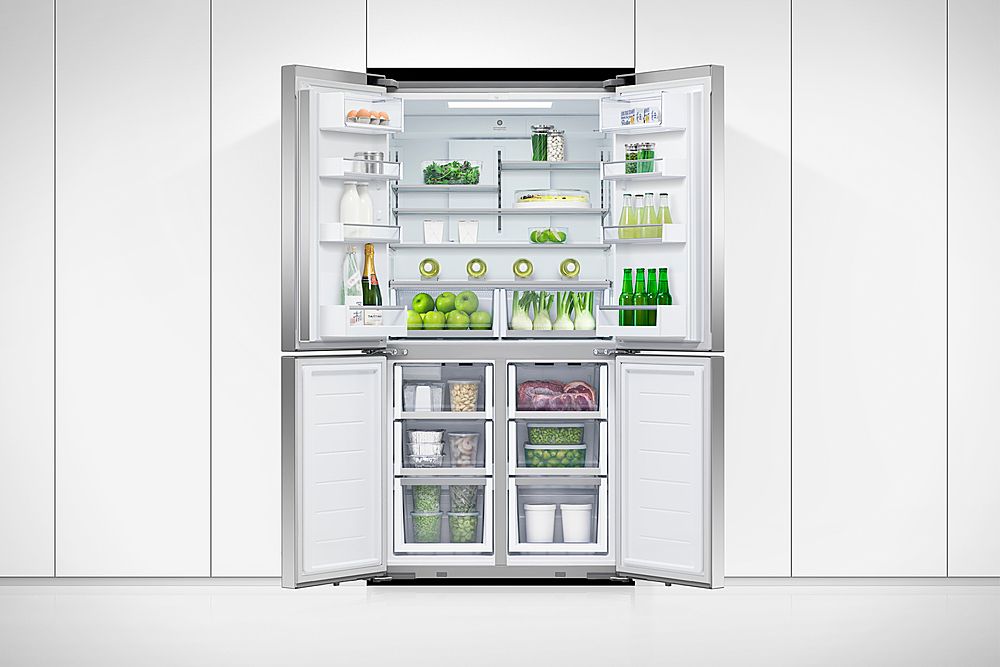
Price Range: $$$ to $$$$
Our Top Picks: Fisher & Paykel 36” Quad-Door Refrigerator for $3,899 at Best Buy; Fisher & Paykel 24” Double Drawer Dishwasher for $1,749 at Best Buy; or Fisher & Paykel 36” Dual-Fuel Range for $7,149 at Abt.
Fisher & Paykel has an interesting history. This New Zealand company started out in 1934 as an importer of American appliances. When the government banned foreign-made goods a few years later, they began to manufacture their own product lines. In 2012, Fisher & Paykel became part of the Haier group.
The company has always focused on innovation and quality, which is reflected in designs that look great and offer a host of user-friendly features. Many products are custom-panel ready, so appliances can be matched to any decor. Refrigerators feature ActiveSmart Foodcare that learns how owners use the appliance and adjusts temperature, airflow, and humidity to maximize freshness. Fisher & Paykel is one of very few brands that offers both single and double-drawer dishwashers. The brand’s kitchen appliances do carry premium price tags, but it offers high-end style that’s hard to beat.
Shop Fisher & Paykel kitchen appliances at Best Buy or Abt.
14. Viking
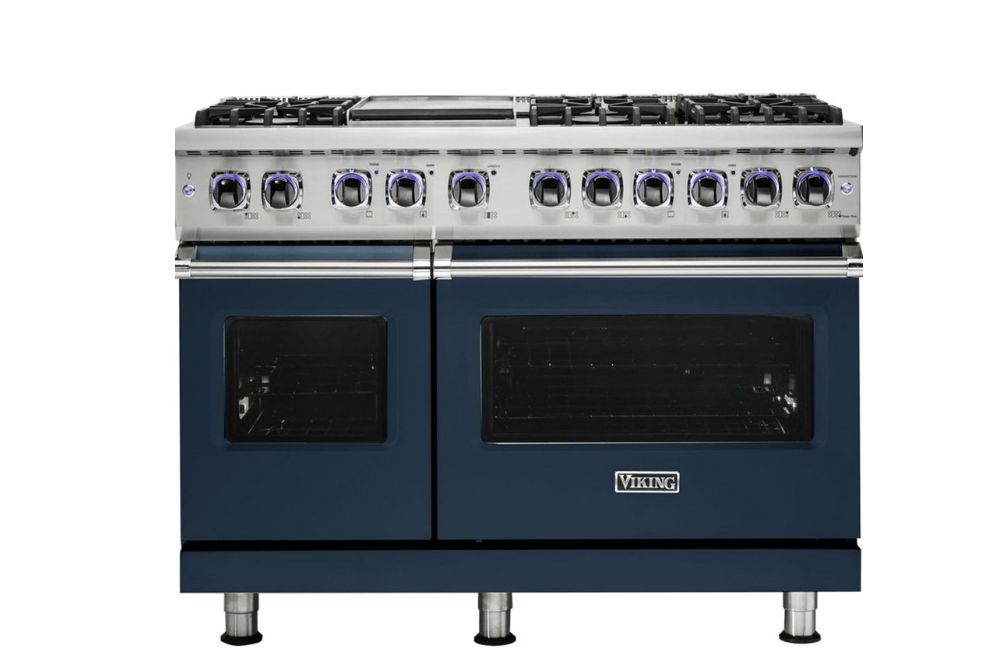
Price Range: $$$$ to $$$$$
Our Top Picks: Viking 5 Series 20.4 cu. ft. Refrigerator for $12,959 at Best Buy; Viking 5 Series 60” Dual-Fuel Range for $27,229 at Abt; or Viking 24” Custom Panel Dishwasher for $1,209 at Abt.
Viking is a relatively young brand in kitchen appliance terms, having been founded in 1987 by Fred Carl Jr. of Greenwood, Mississippi. Although now part of the Middleby Corporation, one of the world’s largest manufacturers of commercial and residential cooking equipment, Fred Carl Jr remains chairperson and CEO, and Viking appliances are still made in the U.S.
Viking makes professional-grade kitchen appliances to the highest possible standards. They have won a host of design, innovation, and efficiency awards from household names and industry specialists like Martha Stewart, Good Housekeeping, The Design Journal, and The National Kitchen and Bath Association. Models like the 60-inch dual-fuel range we selected are undeniably expensive but offer keen amateur chefs the opportunity to expand their culinary skills without the restrictions imposed by ordinary kitchen equipment. Viking also makes an impressive range of cookware that we think is worth checking out.
Shop Viking kitchen appliances at Best Buy or Abt.
15. Wolf, Sub-Zero, and Cove
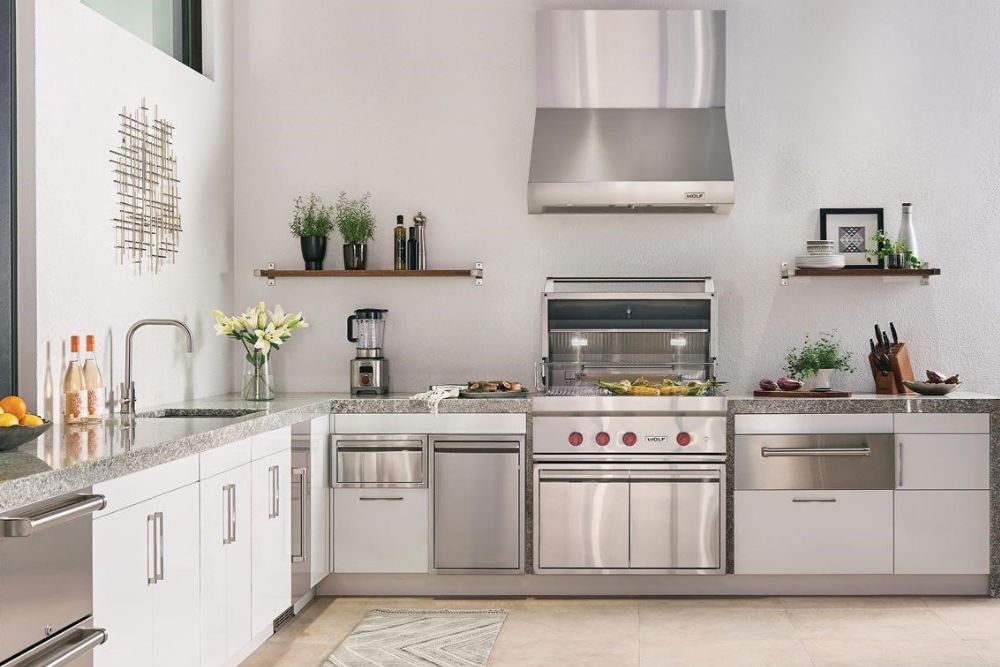
Price Range: $$$$ to $$$$$
Our Top Picks: Wolf 36” Stainless Steel Gas Range (contact Abt for price), Sub-Zero 30” Panel-Ready Column Freezer (contact Abt for price), or Cove 24” Panel-Ready Dishwasher (contact A.J. Madison for price).
Although Wolf, Sub-Zero, and Cove were once three separate brands, they are now manufactured in the U.S. by Sub-Zero Group, Inc and are intended to complement each other. Wolf ranges have signature red knobs (though they can be swapped out for other colors). They also offer built-in ovens. Sub-Zero, not surprisingly, consists of freezers and refrigerators. Cove specializes in dishwashers.
These are luxury kitchen appliances aimed at the most discerning homeowners. Component and build quality are exceptional, and the appliances tend to be extremely durable. The refrigerators and dishwashers usually have panel options and can be matched to virtually any decor. Wolf, Sub-Zero, and Cove kitchen appliances are expensive, and models like the Wolf 36” gas range come with different configurations, so it can be difficult to find exact prices. Potential buyers will want to call their preferred retailer for full details.
Shop Wolf, Sub-Zero, and Cove kitchen appliances at Best Buy (only in some showrooms), Abt, or AJ Madison (not Sub-Zero).
How We Chose the Best Kitchen Appliance Brands
Choosing the best kitchen appliance brands isn’t an easy undertaking, as there are so many different appliances used in a kitchen. To create this list, we considered appliance brands that offered a suite of reputable, popular, and innovative products for the kitchen.
As not every appliance maker excels in every category, we gave preference to those that offer products worthy of a top pick in refrigerators, ranges, microwaves, dishwashers, cooktops, freezers, and ovens. Since some folks are looking for Wi-Fi–enabled appliances while others want streamlined, low-tech options, we included brands that excel at delivering quality options for either need.


